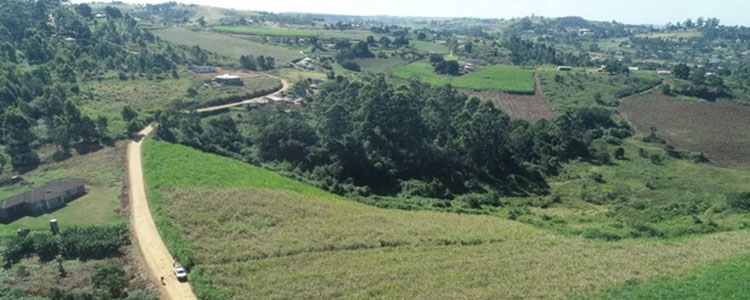Sugar cane is a very important cash crop with a wide range of food and commercial uses, as well as being an important raw material for sugar production.
As one of the top ten countries in the world in terms of sugar production, South Africa has more than 380,000 hectares under sugarcane cultivation, making it the third largest crop in the country. Sugarcane cultivation and the sugar industry chain affect the livelihoods of countless South African farmers and workers.
South Africa's sugarcane industry faces challenges as small-scale farmers look to quit
In South Africa, sugarcane cultivation is mainly divided into large plantations and small farms, with the latter occupying the majority. But nowadays, small sugarcane farmers in South Africa are facing a lot of difficulties, including few marketing channels, lack of capital, poor planting facilities, lack of professional technical training.
Due to the need to face a lot of difficulties and the decline in profits, many small farmers have to turn to other industries. This trend has had a significant impact on the South African sugarcane and sugar industry. In response, the South African Sugar Association (Sasa) is providing a total of more than R225 million (R87.41 million) in 2022 to support smallholder farmers to continue to work in a business that has long been a source of livelihoods.

Lack of agricultural training and advanced technology has also made it difficult for smallholder farmers to use scientifically effective methods to improve operational efficiency and increase their incomes, an example of which is the use of ripening agents.
Sugarcane ripening stimulants are an important regulator in sugarcane cultivation that can significantly increase sugar production. As sugarcane grows taller and has a dense canopy, it is impossible to work manually, and large plantations usually carry out large-area, carpeted sugarcane ripening agent spraying operations by fixed-wing aircraft.

However, sugarcane smallholders in South Africa usually have less than 2 hectares of planting area, with scattered plots of land and complicated terrain, and there are often residential houses and pastures between the plots, which are prone to drift and drug damage, and spraying through fixed-wing airplanes is not practical for them.
Of course, in addition to financial support from the Association, many local groups are coming up with ideas to help small sugarcane farmers solve plant protection problems such as spraying ripening agents.
Breaking through terrain limitations and solving plant protection challenges
The ability of agricultural drones to operate efficiently in small and dispersed plots has opened up new ideas and opportunities for sugarcane smallholders in South Africa.
In order to study the feasibility of agricultural drones for spraying operations in South African sugarcane plantations, a group established a network of demonstration trials in 11 regions of South Africa and invited scientists from the South African Sugar Cane Research Institute (SACRI), a researcher from the Department of Plant and Soil Science at the University of Pretoria, and 15 sugarcane smallholders in the 11 regions to conduct the trials together.

The research team successfully conducted drone ripening agent spraying trials at 11 different locations, with spraying operations performed by a 6-rotor agricultural drone.

Sugar yield increased to varying degrees in all the sugarcane sprayed with ripening agents as compared to the control group which was not sprayed with ripening agents. Although there was an inhibitory effect on the height of sugarcane growth due to some of the ingredients of the ripening agent, the sugar yield per hectare increased by 0.21-1.78 tons.
According to the test team's calculation, if the sugar yield increases by 0.12 tons per hectare, it can cover the cost of using agricultural drones to spray ripening agents, so it can be judged that agricultural drones can play an obvious role in increasing farmers' income in this test.

Helping smallholder farmers realize increased income and promoting the healthy development of the sugarcane industry in South Africa
A farmer from the sugarcane growing region on the eastern coast of South Africa was one of the sugarcane smallholders who participated in this trial. Like other counterparts, he was hesitant to give up planting sugarcane, but after completing this trial, he said, "Without agricultural drones, we were completely unable to access the fields to spray after the sugarcane grew taller, and we didn't even have the opportunity to try the the effect of the ripening agent. I believe this new technology will help us increase our income, as well as improve efficiency and save costs."

Scientists also involved in this trial believe that agricultural drones not only provide an outlet for small farmers, but actually provide valuable ideas for the entire sugarcane farming industry. In addition to increasing incomes through efficient and convenient application, agricultural drones also have an outstanding effect on environmental protection.
"Compared to fixed-wing aircraft, agricultural drones are able to target small plots for finer spraying, reduce the drift and waste of medicinal liquid, and avoid harming other non-target crops as well as the surrounding environment, which is crucial for the sustainable development of the entire industry." He added.
As the two participants said, agricultural drones continue to broaden application scenarios in various countries and regions around the world, providing new possibilities for agricultural practitioners, and jointly advancing the development of agriculture in a healthy and sustainable direction by blessing agriculture with technology.
Post time: Oct-10-2023